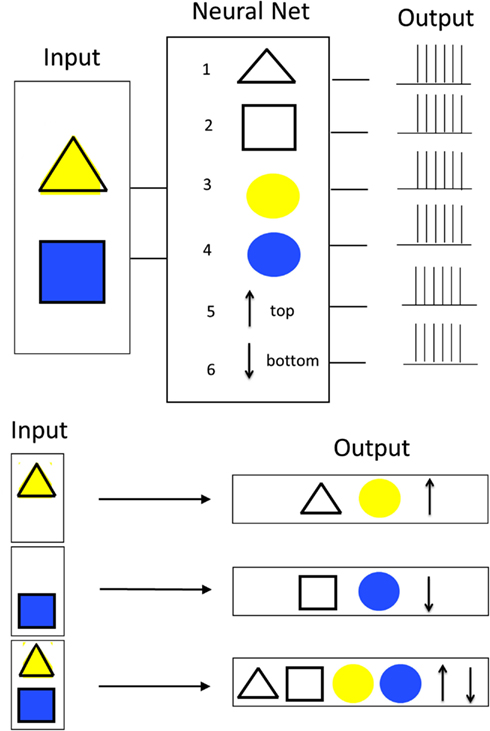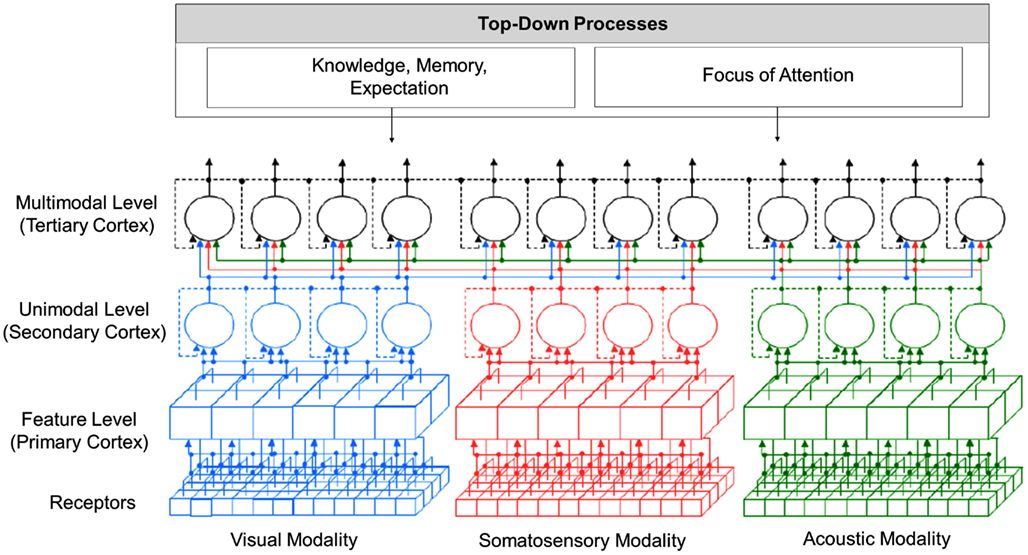Binding problem
Under the binding problem refers to the question of the neural basis of sensory integration, ie the ability of the brain to construct from a variety of sensations unified perceptions.
So structures are known in the visual system that are activated more strongly in their receptive field by certain shapes, colors or movements, as if other patterns are shown. This property of some neurons is based on the idea that sensory information is broken down into such " basic ingredients " and later put back together. You can now see, for example, a red ball move from left to right, so " something red " signal, according to this idea and oversimplified different neurons, " something round " and "a movement from left to right".
The binding problem is now - still largely unresolved - question of how these signals are " linked" to the overall impression of a moving red ball. The name goes back to perception psychology experiments, among others, from the laboratory of Anne Treisman, it could be shown where it may get a false links under certain conditions and in the absence of attention, and can be perceived as objects in the wrong colors.
One theory this means that synchronous oscillations of neuronal assemblies involved for merging this information are responsible at the neuronal level. In the above example, this would imply that neurons for " something red ", " something round " and "a movement from left to right " would be rhythmically active at the same intervals. Experimental measurements have shown partly conflicting results. This is also unclear which time intervals are considered to be " in sync ", which is considered oscillation, and whether synchronous activity selectively activate neurons in later stages of processing or not. Also note that in some regions of the brain neurons well exist that respond to complex stimuli than on isolated properties, such as color and motion.
In connection with the rise in recent years interest in neuroscientific theories of consciousness they developed mainly by the theorist Christoph von der Malsburg hypothesis among others, by Wolf Singer, Andreas K. Engel, was Francis Crick and Christof Koch represented ( the latter two distanced themselves later of this idea).
A clear definition of the binding ( engl. 'binding' ) is, however, from today. While he ( unification within one mind, as in the above example so ) was originally limited to intra-modal integration, he became increasingly expanded over the years and is today mostly for intermodal integration ( merging of the senses into a unified perception) used.









